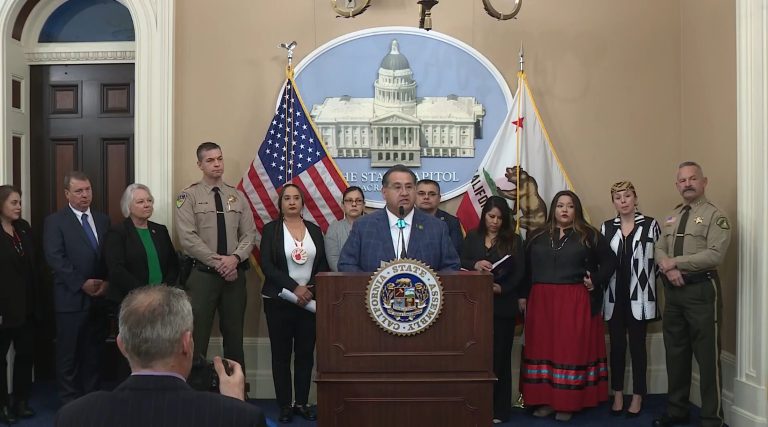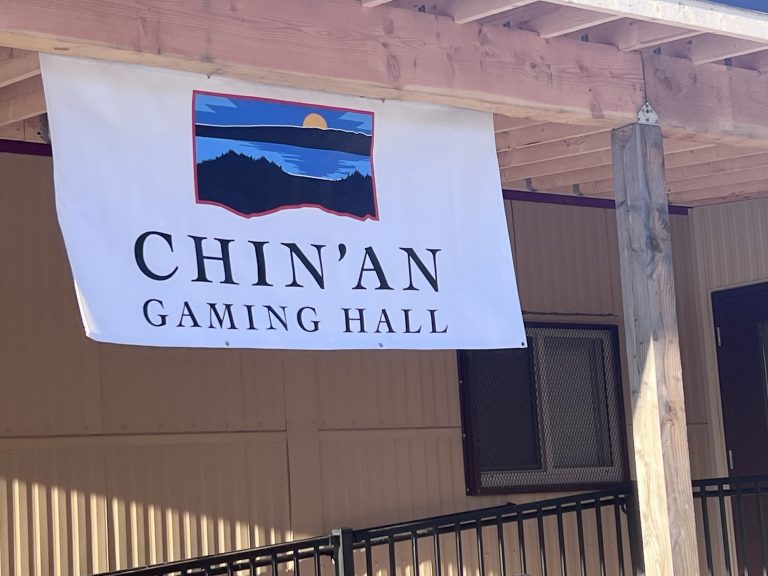Podcast: Play in new window | Download | Embed
Photo: Native American Voting Rights Coalition (NAVRC) meeting in Washington, D.C., September 2023. (Courtesy NARF)
Census data shows that roughly 1-in-4 Native Americans are not registered to vote. But, in recent years, three states in the Mountain West region have passed laws to allow tribes to register them automatically.
The Mountain West News Bureau’s Kaleb Roedel has more.
Native Americans often have to travel long distances to register to vote.
Many don’t have access to postal service, making it hard to register through the mail. And the lack of internet makes it difficult to do it online.
Allison Neswood (Navajo) is a staff attorney with the Native American Rights Fund.
“All of that is rooted in the historic treatment of Native American communities. And so it’s, I think, our collective responsibility to make sure that our communities can overcome these barriers and have a say in the leadership that impacts our communities every day.”
Colorado, Nevada, and New Mexico now give tribes the option to use automatic voter registration. Michigan does as well.
That could mean eligible citizens are automatically registered when they enroll in a tribe.
So far, no tribe is doing this yet – but many are working with the states on the implementation details.

(Courtesy Lomakatsi Restoration Project / Facebook)
Federal grant money is supporting an organization rehabilitating the land and training tribal youth.
Eric Tegethoff has more.
The Interior Department’s Indian Youth Service Corps has awarded the Lomakatsi Restoration Project a grant of $300,000.
The funds will support the organization’s Tribal Youth Ecological Stewardship Training and Employment program.
Marko Bey, executive director of the project, said the Indian Youth Service Corps supports tribal young people age 18 to 30, and up to 35 if they are veterans.
“What it’s focused on is providing paid to train opportunities for tribal members to work on their ancestral lands or neighboring ancestral lands. Engaged in ecosystem restoration or eco-culture restoration work.”
The Lomakatsi Restoration Project has been around since 1995 and is based in Ashland, Oreg.
Bey noted the focus is on ecosystem resilience and reducing large wildfires that have become more prevalent and destructive in recent decades.
The organization works in Oregon and northern California.
The goal of the Indian Youth Service Corps grant is for the organization to train 12 tribal youth from seven tribal communities on restoration in southern Oregon.
Belinda Brown, director of tribal partnerships for the group, said the program will prepare the young people for careers in forestry work.
“The success is the youth having family wage jobs, of them being able to contribute and help their family, of them being able to be successful in their community,” Brown outlined. “Which elevates them to the mentors for that next generation.”
Bey added the goal is also to include tribes in restoration and management work.
“This gives an opportunity to get the lands treated in an ecological way. And to get cultural fire ultimately back on the ground, incorporating Indigenous, traditional ecological knowledge with Western science into the work.”

Benita Lewis of the USDA’s Food Distribution Program on Indian Reservations (FDPIR) for the Small Tribes of Western Washington (STOWW) and her mother Alice Richotte inspected the shelves at the FDPIR Distribution Center in July 31, 2013. (Photo: Bob Nichols / USDA).
A group of senators is pressing the U.S. Department of Agriculture to fix problems with the Food Distribution Program on Indian Reservations (FDPIR).
There has been widespread disruptions in food distribution since April.
FDPIR provides food to income-eligible households on reservations across the country.
The program has experienced delays, missed food deliveries, partial deliveries, and deliveries of expired products.
Many families who use the program are said to be receiving less food or no food at all.
A bipartisan group of senators sent letters to U.S. Agriculture Secretary Tom Vilsack pressing him to urgently address the problems.
The disruptions are said to be impacting more than 100 tribal organizations and thousands of people.
Get National Native News delivered to your inbox daily and stay up-to-date on the 2024 Native Vote. Sign up for our daily newsletter today.



